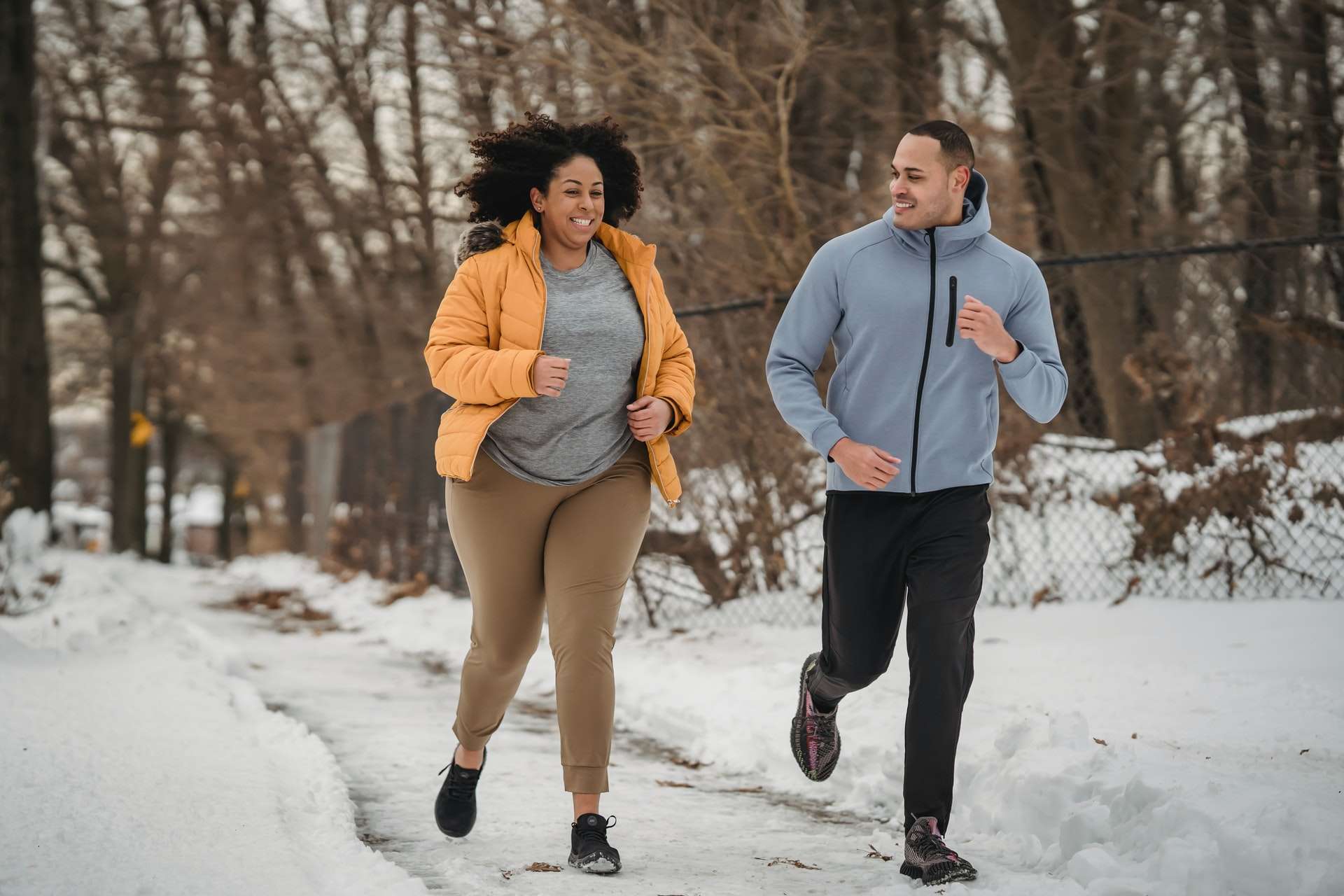It’s that time of the year, cold and snowy conditions hitting many parts of the United States. As conditions start to get colder and snowy it’s super important to start thinking about how you can run safely outside and avoid the treadmill as much as possible. Today we talk about tips for running in the snow. Below we’ve provided you guys with some helpful tips for running outside in snowy/icy conditions to help keep you safe through this Winter’s wintry mix.
Choose Warm Socks
Keeping your feet warm during colder/snowy conditions is super important. It’s not about the thickest pair of socks but more about the circulation and insulation that the sock provides. Most thicker socks actually cut down your circulation and end up making your feet colder so go for a thinner, more insulated sock that will fit into your current shoe. Some great cold gear running socks include: SmartWhool PDH, Drymax Cold Weather Crew, Mizuno Breath Thermo, and Feetures Cold Running Socks.
Warm Gloves
Cold hands are never fun during short or long runs in the Winter, that’s why choosing the perfect pair of running gloves is key. For temperatures that are above 32 degrees I would suggest using a mid to thick layered glove that will keep your hands warm while not overheating them. If the wind is blowing I would suggest going with a thicker, warmer glove that will keep your hands warmer while moving back and forth during your run. If there is no wind I would suggest going with a medium thickness so that your hands don’t overheat or get to hot during your run. For runs that are under freezing conditions I would strongly suggest layering gloves together. Start with a simple base layer glove, something with wool liner followed by a heavier shell glove that will block the wind and moisture away from your hands. This will help keep you warm and dry at the same time. For those who have circulation issues I would suggest adding a hand warmer in your gloves to help keep you warm and dray.
Shorten Your Stride
Running in snowy/icy conditions can be tough to navigate so start with shortening your stride. Focus on shortening your stride when starting your run to help with learning the conditions of the road or trials so that you find the perfect balance and traction. Once you are able to learn your balance on the snowy roads/trails you may then start to extend your stride to a normal length however please keep focused on the conditions and your balance, you don’t want to find yourself getting into the groove and then bam falling on the ground due to being to confident. Also, if the conditions are super slippery you may want to add running spikes to the bottom of your shoes to help with traction and support. This support should really only be used for extreme conditions and if you are running in none scrapped areas or trails.
Hydrate. Hydrate. Hydrate
It’s super easy in the colder temperatures to forget to stay hydrated before and after runs but it’s crucial that runners continue to stay hydrated. Even though your body isn’t hot like in the Summer it’s even more important to stay hydrated during the Winter months due to your body doing more work and sweating more often during your Winter runs. It’s key to continue to hydrate hours before and after any run with either Nuun Hydration, Powerade, Gaterade, or any other electrolyte drink.
Shoes
This may sound stupid, but wearing the right running shoes will do wonders. Staying upright during your snowy/icy run is key and to do this you must have amazing traction on your shoes. I would highly suggest making sure you wear new or relatively new shoes that still have good traction on the soles. If you find that your shoes are losing traction or don’t have much of any I would highly suggest you not run in them due to slipping and falling. If you don’t want to purchase new shoes you may purchase traction devices that can go over your current shoes. Anything that will slip over to add traction will do wonders to your run while keeping you save.
Don’t Count Miles, Count Time
Most of us do it, we run for a certain distance and not for certain time but running in snowy/icy conditions changes things for your body. Running in these conditions engages different muscles compared to running on the dry ground. Don’t expect to just jump into running the same distance as every other day of training, instead take it easy and switch it up to a time run and not a distance run. This will help get your muscles in shape for these new snowy/icy conditions while keeping you safe and off your butt. As someone once told me, count your snowy/icy runs as double due to the impact and muscle work that happens.



